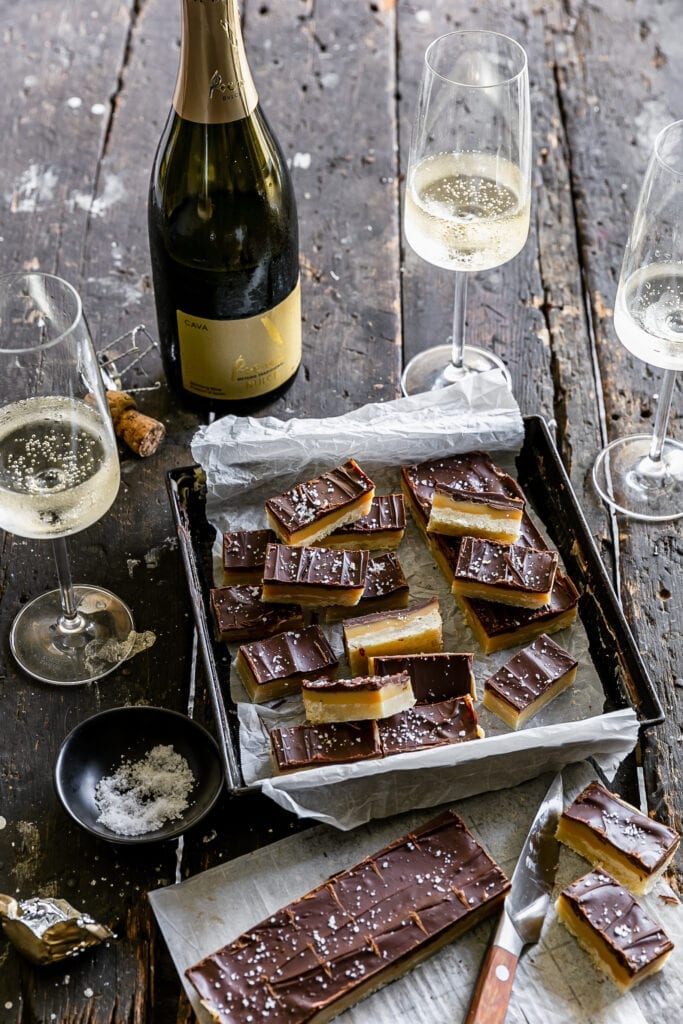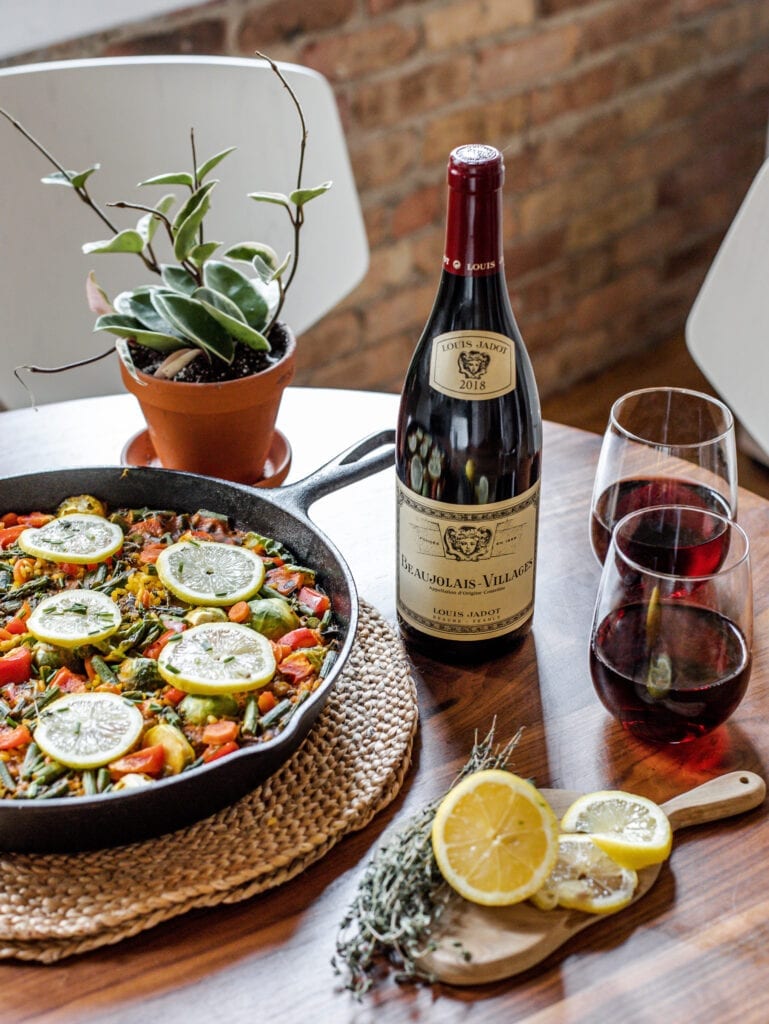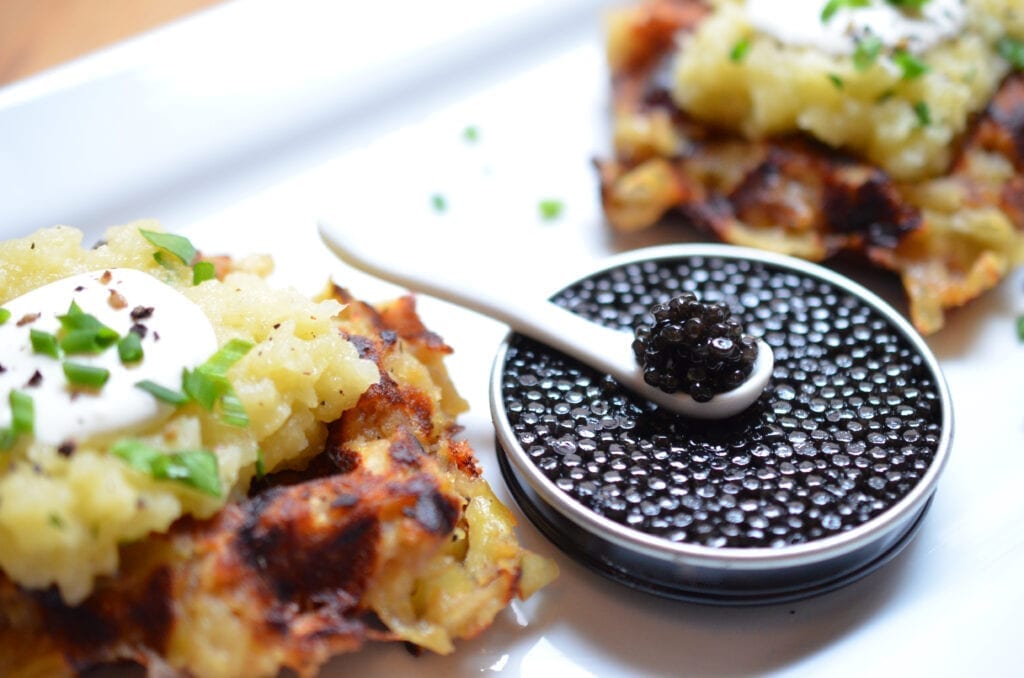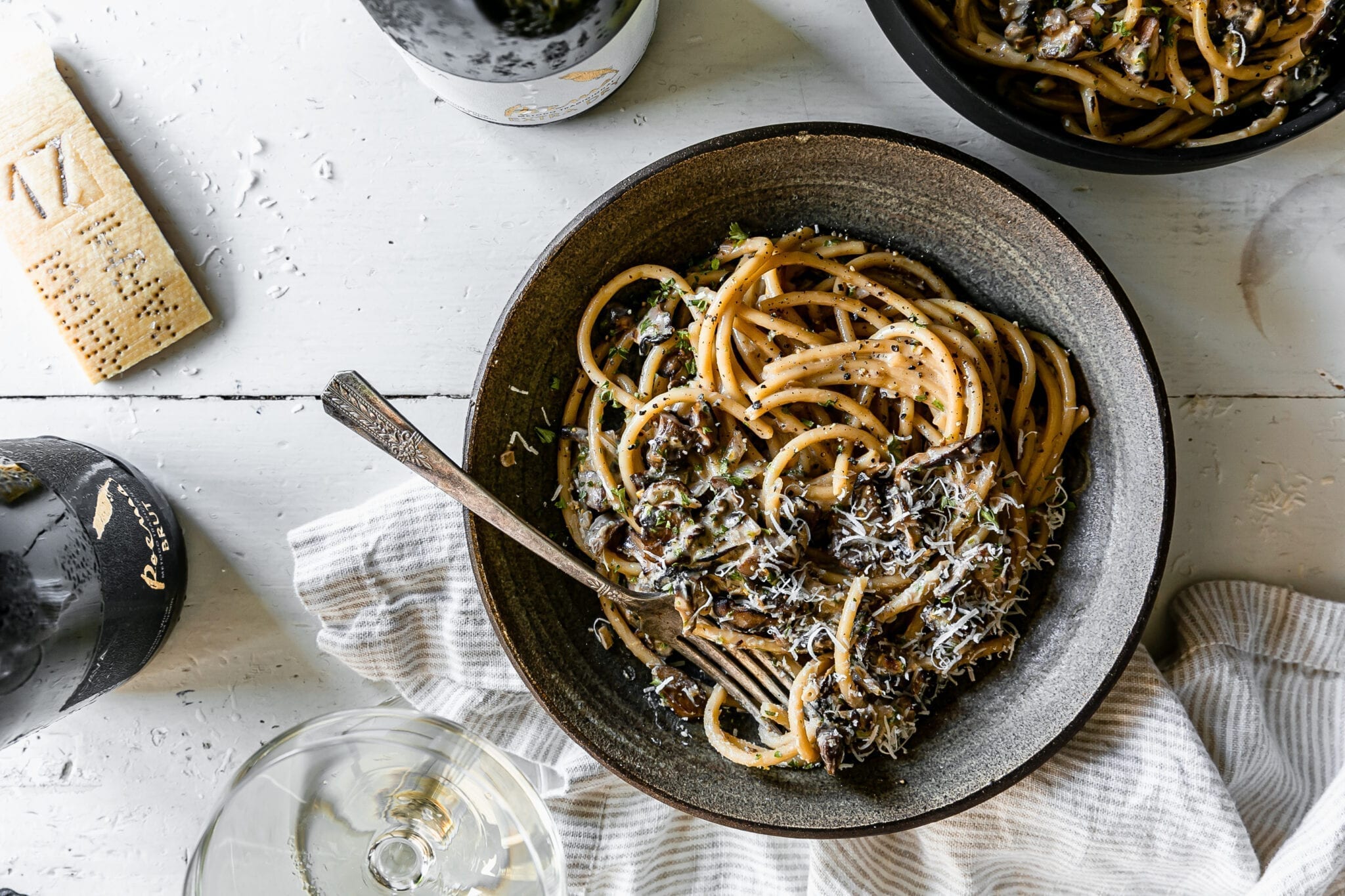In a successful food and wine pairing, each one elevates the other. The food brings out the best qualities of the wine, and the wine enhances the enjoyment of the meal without overpowering or clashing with the food.
Below are some easy rules and reminders to guide you when pairing wine with food. There are also a few dishes, wines, and pairings that you can always count on to hit a home run, plus tricky combinations to watch out for. But keep in mind that taste is highly subjective. Don’t be afraid to follow your instinct and experience! Plus, many food and wine pairing rules come from a simpler time when we ate meat and potatoes every night, not Thai, Italian, and French in the same week. That being said, the following “templates” and examples will steer you in the right direction.
Food and Wine Pairing Tips and Recommendations
- Matching intensity: The cooking and seasoning play a major role in the intensity of flavors. Most successful food and wine pairings result when there are matching intensity levels between the wine and the food.
- Bridge ingredients: Incorporate “Bridge Ingredients,” or food that ties the dish and wine together. Adding crumbled goat cheese to a salad makes it a better match for Sauvignon Blanc because the cheese and wine share similar tangy flavors. Adding peppercorns to a sauce would help that sauce pair more perfectly with a peppery wine, such as a Syrah. A sprinkling of toasted nuts on top of a dish helps bridge it to toasty, buttery, and nutty Chardonnays.
- Match or contrast: Great food and wine combinations come not only from matching flavors, texture, and taste components but also in contrasting them.
-

Poema Cava Dolce with Dessert Similar levels of sweetness: Foods with some sweetness are best paired with wines with similar levels of sweetness. If the food is sweeter than the wine, it will make the wine taste dry, astringent, oaky and/or tannic.
- Fruity with fruity: Dishes with a significant fruit component – pork with sautéed apples, barbecued chicken with apricot glaze, and beef stew with dried plums – often pair beautifully with fruity wines that have super fruity aromas. Gewürztraminer, Muscat, Viognier, and Riesling are examples of fruity whites. Gamay (the grape that makes Beaujolais) and Australian Shiraz (Syrah) are examples of fruity reds.
- Match mouthfeel: The texture (body) and acidity of the wine are as important to matching it with food as its flavors. Delicate wine tastes like water when served with a dramatically spiced dish.
- Pair great with great, humble with humble: This basic principle goes a long way toward success. Pot roast doesn’t need a costly Pinot Noir to accompany it. But an expensive standing rib roast may be the perfect opportunity to spring for a pricey Merlot.
What’s a good wine to pair with…?
Salty, oily, or spicy food
Sparkling wine, Sauvignon Blanc, or Pinot Grigio with salty, fried food
Acidic foods
Sauvignon Blanc, Pinot Grigio, or Gavi with goat cheese and/or a green salad with vinaigrette
Strong flavored fish
Sparkling wine or Sauvignon Blanc (optional: big barrel-fermented Chardonnay) with smoked salmon; side of lemon

Mild fish
Pinot Grigio, unoaked Chardonnay, Pinot Noir, Beaujolais Villages with grilled ahi or mahi-mahi; side of honey-mustard or dill dressing
Red meat
Cabernet Sauvignon and Beaujolais Villages with rare roast beef; side of ketchup
Asian flavors
Keep in mind sweet ‘n’ salty: An Asian stir-fry seasoned with soy sauce is often terrific with an American Gewürztraminer that’s slightly sweet.
Sweet foods
Moscato d’Asti with plain sugar cookie and a side of jam or Port with chocolate cookie and a side of chocolate sauce or dense brownie or chocolate cake with icing
Beware! These foods are often difficult to pair with wine:
Soups – hard to match liquid to liquid
Salads with Vinegar – acidity of vinegar, salad dressing is destructive to the wine
Asparagus – pungent flavors, consider the cooking method and seasoning, fortunately not typically a standalone course
Artichokes – after tasting an artichoke, wine will taste sweeter
Chocolate – intense sweetness and flavors can overpower the wine
Classic Matches Made in Heaven
Finally, here a few pairings that you can never go wrong with.
- Oysters with Muscadet or Chablis
- Caviar with Blanc de Blancs Champagne
- Foie Gras with Sauternes
- White Truffles with Barolo
- Prime Steak with Cabernet Sauvignon
- Grilled Baby Lamb with Rioja
- Crème Brûlée with Aged Tawny Port




